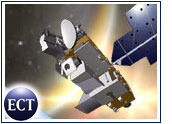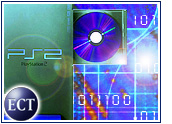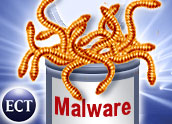
At an executive gathering Wednesday, Sun Microsystems previewed the Solaris 10 operating system, the upcoming version of the company’s award-winning OS for systems based on UltraSPARC and x86 microprocessors. The company, which will make early-access versions of the software available for download this summer, said the new OS will represent a culmination of 20 years of research and development that will propel its customers and partners into the next decade.
Sun executives, including CEO Scott McNealy and chief strategy officer Mark Tolliver, fielded questions after the announcement. When asked what Sun’s attitude toward the Internet will be in 10 years, McNealy recast the company’s network-is-the-computer mantra: “It will be an internet of things,” McNealy said. “Your stuff will be connected so you don’t have to. Your clocks, cars, pets, thermostats and luggage will be connected. Your car will run an auction with gas stations in range, negotiating best price to refill your tank [and] will also check to see what is low in your fridge and direct you to [the] nearest gas station with convenience store.”
“This will all be powered with Java client technology and Sun infrastructure on the back end,” McNealy told conference participants.
In moving toward that goal, Sun said, the new version of Solaris 10 will provide more than 600 new features that allow “optimal system utilization, relentless availability, unparalleled security and industry-leading performance.”
Self-Healing and Systems Control
In the upcoming year, Sun said it will promote technologies designed to give companies more system control, flexibility and diagnostics. These new features and enhancements, the company hopes, will improve system administrators’ ability to specify the level of system control granted to individual users and administrators, contain viruses or other intrusions, and improve computers’ ability to diagnose and automatically repair problems.
Key among these features will be grid containers, self-healing technologies and security enhancements. “The Solaris operating system and the Sun Java Enterprise System are at the core of the Internet, delivering unbeatable security and scalability for the most demanding customers around the globe,” said Jonathan Schwartz, Sun’s executive vice president of software.
“With the introduction of Solaris 10, we’re now broadening our focus to deliver better Linux compatibility than any OS on the market, breathtaking performance on Intel and Opteron systems, along with our UltraSPARC family, and a breadth of utilization and security offerings never before seen in a commercially available operating system,” Schwartz said.
With the demise of HP-UX and AIX, and the precarious reliance on Linux vendors that many customers now are feeling, Schwartz added, “Solaris 10 could not be better timed to deliver low cost, high scale, high security, from one-way developer systems to 100-way life-critical deployments.”
Upcoming Features
According to the company, Sun’s approach to grid containers will allow administrators to divide a given system into more than 4,000 software partitions per single instance of the operating system. According to Sun, the new grid containers will make consolidation not only simple, but also safe and secure.
Meanwhile, predictive self-healing technologies that enable fault isolation, diagnosis and self-healing of both software and hardware faults will help reduce system outages and the time required to find the root cause of system problems. According to company executives, the technology will automatically restore application services after a fault.
A new suite of dynamic-tracing capabilities also will provide tools for analyzing and diagnosing elusive problems in real-time. Sun designed these capabilities to reduce the time needed to find the root cause of application performance bottlenecks and enhance system performance.
The Road to Solaris 10
Through Sun’s Software Express program, customers will have access to several upcoming features from Solaris 10 — as they are rolled out — including the grid containers, dynamic tracing and rights-management technologies. With the Software Express program, customers can download the latest Solaris OS technologies and implement them in their production environments.
The Solaris 10 operating system is scheduled to become available at the end of 2004, at which time pricing will be announced. The Sun Java Enterprise System is currently available and is priced at US$100 per employee per year. The second edition will be available next quarter concurrently with the upcoming Solaris 9 OS release.
Sun also unveiled the first comprehensive refresh of its Sun Fire systems family in more than a decade — and a range of technologies that accelerate a customer’s ability to benefit from them. Sun’s new midrange and high-end systems are the first to include its UltraSPARC IV multithreaded processors.
The company also unveiled its first Sun Fire system powered by AMD Opteron processors. In addition, it announced five new reference architectures designed to help customers quickly implement answers to business requirements.
“We’re serving up big-time price-performance improvements with investment protection,” said Scott McNealy. “One hundred percent binary compatibility with innovation means customers can upgrade all at once or in stages, mixing or matching processor speeds and systems.”
Mark Tolliver echoed McNealy’s assertions: “By combining breakthrough innovation with industry-standard components and systems-level engineering, we can deliver to customers an unmatched value proposition.”
Sun’s Future Outlined
Sun’s quarterly announcements have become almost like state-of-the-union addresses, with the company typically indicating surprising new directions, technologies or partnerships. This quarter, with several big announcements about international partnerships already made, conference participants seemed more interested in hearing about where the company plans to head in the future.
During the conference, Sun executives outlined the company’s plans to remain completely focused on network computing, embracing both the x86 architecture and the Linux operating system. Sun has not indemnified its customers formally but has made informal statements about the SCO-IBM lawsuit, and the company reiterated its position in today’s conference.
“We believe in intellectual property rights and indemnify our customers on our products,” said Anil Gadre, Sun’s vice president of software business management. “We think others should do the same as well.”
In response to a question about whether Sun will engage the consumer marketplace with new-media devices or even printers like those made by Dell, Gateway and HP, McNealy said Sun will go in that direction only if he gets “hit by a hockey puck too hard.”
“We are working with the modern client and appliance manufacturers to put JVMs into their stuff,” said McNealy. “We don’t want to compete with them.”
Sun in the Consumer Space
But Sun is not shying away from the consumer space. “We have a number of partners that help us go to market in various segments, like retail consumer,” said Peder Ulander, director of marketing for desktop solutions at Sun, referring to Sun’s Java Desktop System. “As demand for the JDS reaches consumer users, we will use our channel partners to deliver the solution.”
And, of course, the company will remain focused on Java, one of its core strengths. “Java is everywhere,” said Ingrid Van den Hoogen, Sun’s director of strategy. “Java technology is fueling network growth everywhere. It’s not about just PCs, but everything of value on the network. Java technology runs on over 200 million cell phones around the world, 500 million Java cards, 550 million PCs and 80 percent of the enterprise servers in the world.”
Microsoft has been rolling out its .NET strategy, said Van den Hoogen, “but [Microsoft] certainly does not have the breadth that the Java technology and architecture is addressing. Our strategy continues — working with everyone in the Java community to promote Java technology as the architecture for the network.”




















































